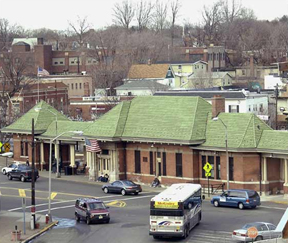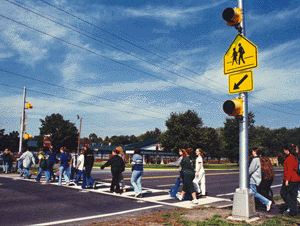NJDOT and Commissioner Jack Lettiere
Smart Growth Awards Category: Use of modern, community-friendly and environmentally friendly solutions to New Jersey’s transportation problems
Winner: NJDOT and Commission Jack Lettiere
To the NJ Department of Transportation and Commissioner Jack Lettiere for a significant shift in transportation decision-making toward the use of modern, community-friendly and environmentally friendly solutions to New Jersey’s transportation problems.
Smart growth advocates have long seen the union of land use planning and transportation planning as an essential piece of the smart growth puzzle. A transportation system that offers transportation choice is key to creating efficient, attractive, socially equitable communities, so that not every one needs a car to get around, automobile traffic is reduced, air and water pollution are lessened, and demands are reduced for development of open space.
Yet in years past, state agencies have often behaved traditionally, ignoring this link between land use and transportation.
In the last several years, however, under Commissioner Jack Lettiere’s leadership, the New Jersey Department of Transportation has begun to make this connection between land use and transportation planning, and has put smart growth principles at the heart of its policies and projects. Reaching out to New Jersey’s towns – particularly those in congested or high-growth areas – the agency has created partnerships able to wield planning tools more subtle and effective than simply adding more pavement.
Along Route 9 in Ocean County, for example, New Jersey DOT projected that new lanes would simply fill up with new traffic in a short time. The department’s Route 9 project description states that “rather than widening the road, which would be unsustainable and ineffective in the long term, NJDOT is developing alternatives, including proposing traffic calming measures throughout the corridor and supporting mixed-use development.” The emerging plan, developed in close cooperation with local governments, “will seek integration of local emerging development plans into an overall strategy which creates new centers, walkable communities, and connected street networks.”
NJDOT’s new approach can be seen as well in more than a dozen similar projects. Together with the NJ TRANSIT/NJDOT Transit Village program, which encourages residential and commercial growth around rail and bus hubs, “smart transportation” is revolutionizing the state’s approach to mobility and transportation capacity. In addition to their emphasis on mass transit, bicycle/pedestrian projects and reconnected street networks, the new programs also allow NJDOT to reduce the state’s backlog of pavement and bridge repair needs.
Commissioner Lettiere has compiled these new priorities and approaches into a “Future in Transportation” policy being offered to constituencies around the state. Key principles articulated in the policy package include a focus on the root causes of traffic congestion, especially transportation-inefficient land uses; foregoing transportation investments that promote sprawl and, thereby, future traffic congestion; a close working relationship between NJ DOT and municipal governments; the creation of more transportation choices and options regarding both routing and modes of transportation; and a focus on increasing the safety and quality of life in communities.
There are already signs that NJ DOT’s transformation could become the national model it deserves to be. Commissioner Lettiere was recently named chair of the American Association of State Highway and Transportation Officials (AASHTO), the national “trade association” of state transportation departments. The commissioner’s emphasis on the root causes of traffic congestion is gaining notice from his peers. And at a recent transportation regional policy conference organized by the Commissioner -attended by the leaders of the Pennsylvania, New Hamphire and Delaware DOTs, as well as delegations from most other northeastern states – the majority of the transportation leaders voiced strong support for New Jersey’s new approaches.
About a decade ago, our transportation agencies began to say: “We cannot build our way out of congestion.” But they nonetheless continued to try. Now in New Jersey, that principle is reflected in practice.













